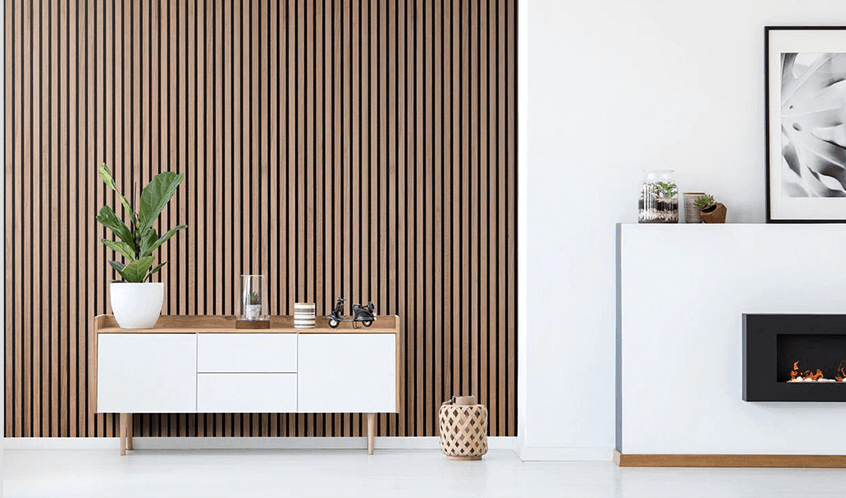Mastering the Cost of Wall Paneling: Your Ultimate Guide

Mastering the Cost of Wall Paneling: Your Ultimate Guide
Wall paneling provides a distinct blend of design and usefulness, transforming plain walls into eye-catching focal pieces. Wall paneling is also a wonderful way to elevate your home’s interior while keeping
in mind. Whether you want to add cosy charm or modern elegance, knowing the cost of wall paneling may help you budget wisely and make informed decisions.
This comprehensive guide will walk you through the key factors influencing costs, tips to save money, and answers to common questions.
Breaking Down Wall Paneling Costs
The cost of wall paneling varies according to numerous factors. Understanding what causes these expenditures can help you plan your project more effectively.
Material Choices: The Foundation of Costs
Different paneling materials have varying pricing points, durability levels, and aesthetic appeal. Here’s a close look:
MDF and Plywood
These materials, which are both affordable and versatile, are ideal for painting or laminating. Prices vary from $1 to $3 per square foot.
Solid Wood
Opting for premium materials like solid wood can increase durability but also affect
significantly. Solid wood, which offers both luxury and durability, costs between $15 and $40 per square foot, depending on the type of wood.
PVC Panels
PVC panels are water-resistant and simple to clean; they cost between $5 and $10 per square foot, making them perfect for bathrooms and kitchens.
Stone or Brick Veneer
These panels are a premium alternative for rustic or industrial designs, costing $25 to $50 per square foot.
Installation Costs: DIY vs. Hiring a Pro
Labor charges can significantly impact the cost of wall paneling
DIY Installation
If you’re skilled, a DIY approach can save $5 to $10 per square foot. However, precision and the right tools are essential.
Professional Installation
Hiring professionals ensures flawless results. Expect to pay $5 to $10 per square foot for installation.
Wall Preparation
Preparation is essential for a flawless finish. If you need to repair or level your walls, budget $1 to $3 per square foot.
Additional Cost Factors
Other expenses to consider:
- Custom Designs: Intricate patterns or shapes increase material and labor costs.
- Finishings: Paint, stain, or sealant may add $2 to $5 per square foot.
- Area Size: Larger spaces cost more but may benefit from bulk pricing.
Average Costs for Common Scenarios
Proper planning and smart choices can help you control
while achieving stunning results. Here’s an estimate of the cost of wall paneling based on a 200-square-foot area:
| Material | Cost (Per Sq. Ft.) | Installation | Total Range |
|---|---|---|---|
| MDF or Plywood | $1–$3 | $5–$10 | $1,200–$2,600 |
| Solid Wood | $15–$40 | $5–$10 | $4,000–$10,000 |
| PVC | $5–$10 | $5–$10 | $2,000–$4,000 |
| Stone/Brick Veneer | $25–$50 | $5–$10 | $6,000–$12,000 |
Creative Paneling Options to Enhance Your Space
The possibilities are endless when it comes to wall paneling. Here are some popular choices:
- Shiplap: A clean, modern aesthetic that adds texture and depth.
- Wainscoting: A classic look perfect for dining rooms and hallways.
- Geometric Panels: Unique patterns to create a bold, contemporary style.
- Beadboard: A charming, vintage vibe ideal for cozy spaces.
How to Save on the Cost of Wall Paneling
Renovation does not have to be pricey. Here are practical ideas for keeping your project on budget:
- Shop Around: Compare prices from multiple suppliers and contractors.
- Consider Alternatives: Faux materials mimic expensive options at a fraction of the price.
- Focus on Accent Walls: Use premium materials sparingly to create a focal point.
- DIY Prep Work: Handle wall repairs and priming yourself to cut labor costs.
FAQs About the Cost of Wall Paneling
1. How Much Does Wall Paneling Typically Cost?
The cost of wall paneling is determined by the materials used, the installation process, and the wall preparation. Expect to pay between $1,200 and $12,000.
2. Is Wall Paneling a Good Investment?
Yes, wall paneling improves the aesthetics of your property while also increasing its market value. High-quality materials, such as wood or stone, can leave a lasting impact.
3. Can I Install Wall Paneling Myself?
DIY installation is possible for straightforward designs and lightweight materials. However, professional installation is recommended for complex or heavy panels.
4. Are There Maintenance Requirements?
Maintenance depends on the material. Solid wood may need periodic sealing, while PVC and MDF require minimal upkeep.
5. What Is the Cheapest Wall Paneling Option?
MDF and plywood are the most affordable, starting at $1 per square foot.
Investing in wall paneling is an excellent way to enhance your home’s interior design while improving durability. By understanding the cost of wall paneling and exploring your options, you can achieve a stunning transformation that suits your budget.
Whether you choose modern shiplap, classic wainscoting, or luxurious stone veneer, wall paneling is a worthwhile upgrade for any space.